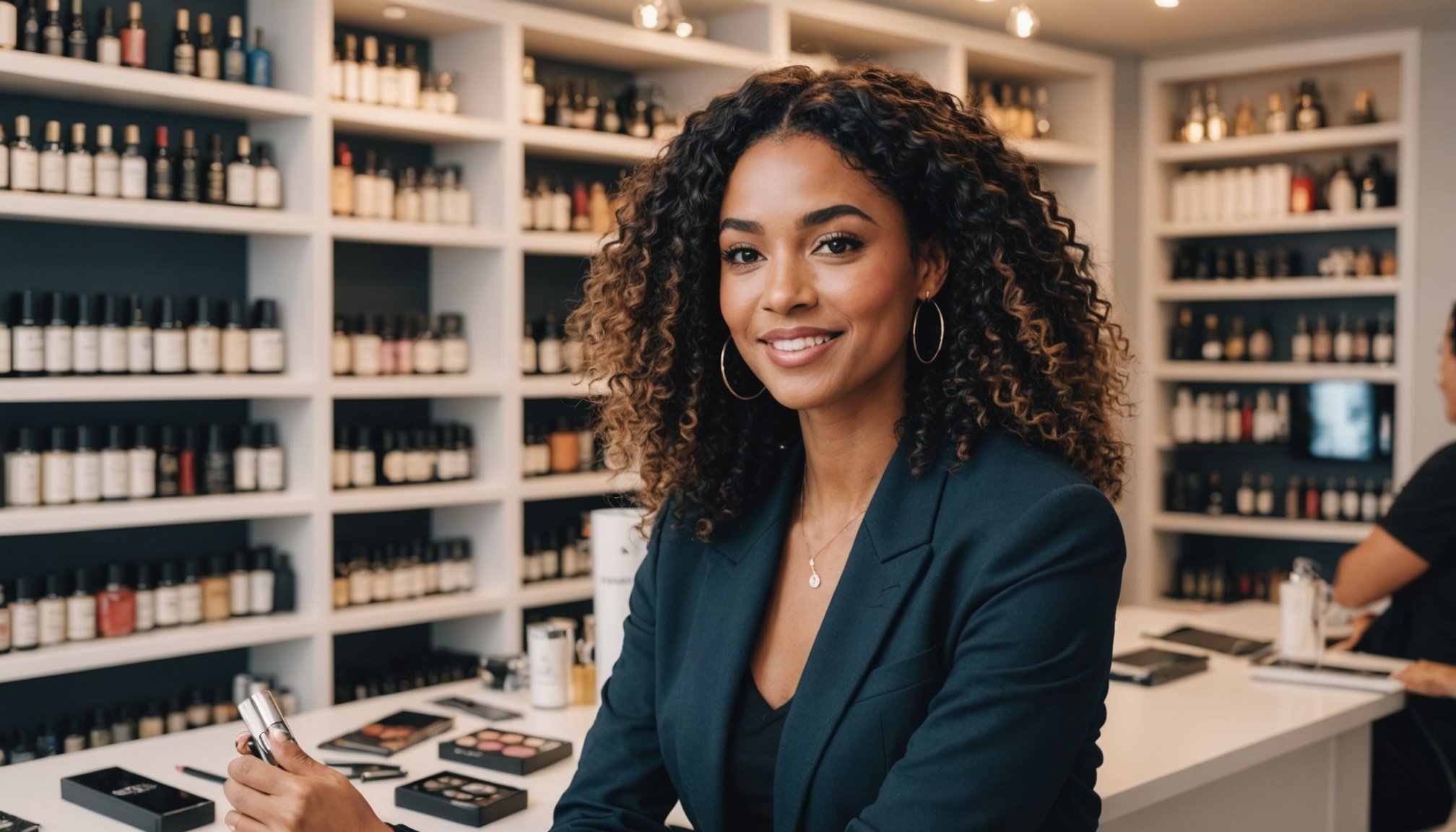Introduction to Influencer Marketing for Beauty Brands
In the dynamic landscape of the beauty industry, influencer marketing has emerged as a formidable force. By leveraging social media personalities, beauty brands can significantly boost their visibility. Influencers often possess dedicated followings, making them ideal partners in reaching potential customers. This strategy is vastly employed within the vibrant UK market, where trends evolve rapidly.
The value of influencer partnerships lies in their ability to seamlessly integrate brand messages into authentic content. This authenticity fosters trust and engagement, crucial components in the beauty sector. Effective campaigns result in increased brand awareness and directly influence consumer purchasing decisions.
Topic to read : Comprehensive handbook to navigating uk legal regulations for starting your cryptocurrency exchange
Currently, the UK beauty market experiences notable trends, such as a shift towards sustainability and inclusivity. Beauty brands are increasingly collaborating with influencers who embody these values, thus aligning marketing efforts with consumer demands.
Moreover, these partnerships allow brands to tap into niche markets. Micro-influencers, with smaller but highly engaged audiences, offer tailored reach. On the other hand, macro-influencers provide broader visibility. The key is to balance reach with relevance, ensuring the influencer’s audience resonates with the brand message. Understanding these dynamics is essential for any brand aiming to thrive in this competitive environment.
Also to see : Boosting your art studio: innovative online workshop strategies to captivate uk clients
Defining Your Influencer Marketing Goals
Establishing clear influencer marketing goals is crucial for the success of any campaign. Begin by identifying your target audience and defining key performance indicators (KPIs) to measure success. For example, if your goal is to increase brand awareness, your KPIs might include metrics like reach and engagement. Understanding your target demographics aids in tailoring your campaign to resonate with them, ensuring effective messaging.
Next, set measurable outcomes for your influencer campaigns. These outcomes may involve increased sales, website traffic, or followers on social media platforms. By quantifying expectations, you can better assess the impact of your efforts. Implementation of strategic planning is essential in aligning these goals with the broader business objectives, ensuring synergy across all marketing efforts.
Strategic planning involves determining the message and narrative that aligns with your brand’s core values. For instance, if your beauty brand focuses on sustainability, partnering with influencers who advocate eco-friendly practices strengthens brand perception. This alignment of influencer strategies with business objectives is pivotal in creating authentic connections with potential customers and driving long-term engagement and loyalty. The clarity in goals and alignment ultimately leads to more impactful and rewarding campaigns.
Selecting the Right Influencers
Choosing the right influencers is vital in achieving your marketing goals. The selection process should focus on three key elements: influencer types, their engagement levels, and their affinity with your brand.
Types of Influencers
Influencers are categorized into micro and macro types. Micro-influencers typically have fewer followers but boast highly engaged audiences, making them perfect for targeting specific niches. In contrast, macro-influencers reach a wider audience, which is beneficial for broad visibility.
Evaluating Influencer Reach and Engagement
When assessing influencers, consider their reach and engagement metrics. Look beyond follower count to evaluate engagement rates through likes, comments, and shares. Consistent interaction with their audience suggests a genuinely engaged following.
Assessing Brand Affinity
Brand affinity is a crucial component. Ensure the influencer’s values and messaging align with your brand’s ethos. A deep alignment helps in delivering authentic content that resonates with your audience. Influencers should embody the lifestyle and values your brand promotes, creating a seamless connection that enhances trust and credibility with potential customers.
Selecting influencers that fit your brand identity and have proven audience engagement ensures a successful collaboration. Ultimately, the right influencer amplifies your message, enhancing brand perceptions within the UK beauty market.
Building Effective Partnerships
In the realm of influencer partnerships, nurturing relationships is pivotal for successful campaigns. A partnership should start with developing a mutual understanding and aligning expectations. It’s crucial to communicate brand values and objectives clearly, ensuring influencers are on the same page. This alignment not only sets the tone but also strengthens the partnership’s foundation.
An essential aspect of collaboration is structuring contracts and agreements. These documents should outline key details such as content deliverables, timelines, and compensation, ensuring both parties are clear on their commitments. This formality protects both the brand and the influencer, mitigating potential disputes.
To cultivate long-lasting and positive influencer partnerships, employ strategies for maintaining good relations. Regular communication and feedback help keep collaborations on track and adaptable to changes. Encouraging creativity while highlighting brand guidelines further enhances the influencer’s authenticity, increasing engagement and trust from their audience.
By prioritising these collaboration strategies, beauty brands can leverage influencer partnerships effectively, enhancing their visibility and credibility within the competitive UK market. Establishing a solid foundation in influencer relationships fosters successful campaigns and amplifies brand presence significantly.
Executing Influencer Marketing Campaigns
Executing an effective influencer marketing campaign involves meticulous planning and strategy, with a focus on content creation and audience involvement. To begin, crafting compelling campaign briefs is essential. These briefs must clearly define campaign objectives, brand messaging, and specific deliverables. Provide influencers with creative freedom while maintaining alignment with your brand’s core values.
Crafting Compelling Campaign Briefs
A well-structured campaign brief serves as a roadmap. It should outline key elements such as target audience, desired outcomes, and content themes. Clarity in briefing avoids misunderstandings, ensuring both brand and influencer work towards the same goals.
Collaboration on Content Development
Effective collaboration enhances content quality. Encourage influencers to inject personal style into their content, promoting authenticity. Regular feedback fosters a collaborative environment, enabling tweaks to keep the campaign aligned with objectives.
Utilizing Various Platforms
Selecting the right platforms is crucial for reaching the intended audience. While Instagram remains dominant in beauty marketing, experimenting with new platforms like TikTok can offer fresh engagement opportunities. Beauty brands must adapt to platform-specific trends and user behaviours to maximize impact. Engaging audiences across multiple channels helps in building a cohesive brand presence.
Measuring Campaign Success
Understanding performance metrics in influencer marketing is essential in assessing your campaign’s impact. Defining success requires both qualitative and quantitative metrics. While likes, comments, and shares provide quantitative data on engagement, qualitative insights can be gathered from sentiment analysis and feedback.
To track performance effectively, utilizing specific tools and techniques is invaluable. Social media analytics platforms offer real-time data, helping brands to monitor trends and audience response. Metrics such as engagement rate, reach, and conversion rates offer a comprehensive view of a campaign’s effectiveness.
Evaluating return on investment (ROI) is critical. Assessing ROI involves comparing the costs associated with the campaign to its benefits, such as increased brand awareness or sales. If initial goals are unmet, adjusting strategies becomes necessary. Improving messaging, content style, or influencer alignment can optimize future efforts.
By regularly analyzing these metrics, beauty brands can refine their influencer marketing approaches. Being proactive in strategy adjustments ensures campaigns remain relevant and effective in the ever-evolving UK market. Ultimately, a thorough understanding of performance metrics enables informed decisions that enhance brand impact and growth.
Navigating Legal Considerations
In the realm of influencer marketing regulations, compliance with legal requirements is paramount, particularly in the UK. Transparency in influencer posts is crucial, ensuring that audiences are aware of any paid partnerships. UK regulations mandate that influencers must clearly disclose such relationships, typically using labels like “#ad” or “#sponsored”.
The significance of this transparency extends beyond mere legal compliance; it builds trust with consumers by providing clarity on marketing intent. Non-compliance can have serious repercussions, ranging from reputational damage to legal penalties. The UK’s Advertising Standards Authority (ASA) is vigilant in monitoring and enforcing these regulations, making it clear that ignorance of the law is not an excuse.
To adhere to best practices, beauty brands should ensure contracts include clauses detailing compliance with influencer marketing regulations. These agreements should specify required disclosures, safeguarding both the brand and influencer. Brands are encouraged to stay informed about evolving legal landscapes, maintaining a proactive approach to regulation adherence.
Furthermore, regular audits of influencer content can help brands remain compliant, avoiding potential pitfalls. By embedding compliance into influencer partnerships, brands not only abide by legal standards but also foster consumer trust, enhancing their credibility.
Case Studies and Best Practices
Exploring influencer marketing through real-life case studies provides valuable insights into effective strategies and common pitfalls. In the UK, notable beauty brands have harnessed influencer marketing to capture the market with innovative campaigns. One standout example is a skincare brand that collaborated with micro-influencers to emphasize genuine user testimonials, resulting in a significant boost in consumer trust and sales. This highlights how even smaller campaigns can achieve impressive results if they resonate with the audience.
Successful Campaign Examples
Examining successful influencer marketing campaigns illuminates best practices. Such campaigns commonly feature well-defined goals, strategic influencer selection, and a strong narrative aligning with brand values. This cohesive strategy ensures that content feels authentic, fostering deep audience connection.
Lessons Learned from Failures
Conversely, some campaigns fail due to misalignment between the brand and influencer, unclear messaging, or inadequate audience understanding. These pitfalls emphasize the importance of careful planning and alignment, ensuring both parties share the same vision.
By analyzing past campaigns, beauty brands can refine their influencer marketing strategies, capitalizing on successes and learning from failures. This approach not only positions them favourably within the competitive UK market but also enhances their adaptability to evolving industry trends and consumer behaviours.











